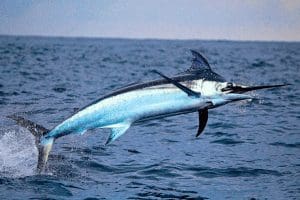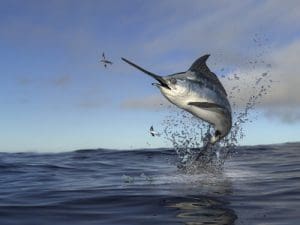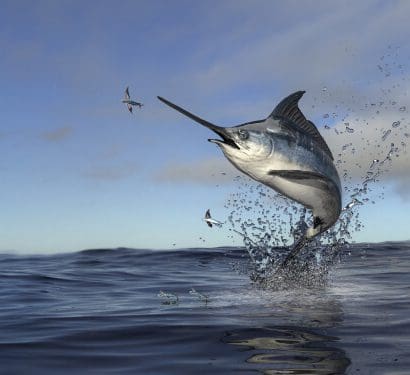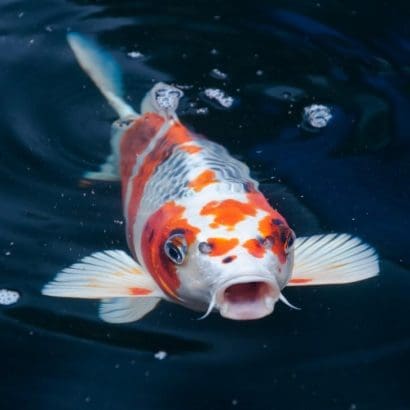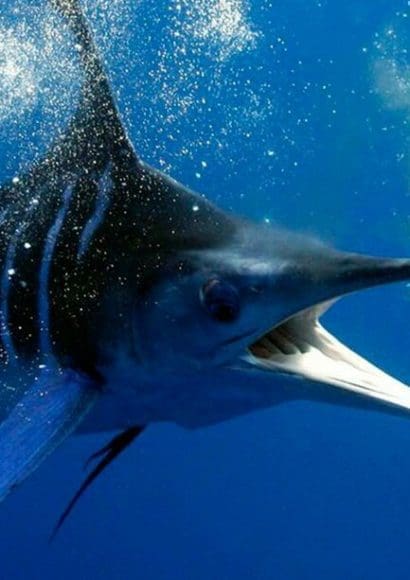
The swordfish, also known as Xiphias gladius, is a majestic and powerful ocean predator that has captivated the attention of fishermen and seafood enthusiasts alike. With its distinctive long bill and sleek body, the swordfish is a prized catch for its delicious flesh and impressive size. However, behind its allure lies a troubling reality: the swordfish population is facing numerous hazards and threats that jeopardize its survival.
In this article, we will delve into the hazards that pose significant risks to swordfish populations and explore the conservation measures necessary to protect this magnificent species. From overfishing to illegal practices, the swordfish faces a myriad of challenges that require urgent attention. We will also examine international laws and regulations aimed at curbing destructive fishing practices and conserving swordfish populations.
By shedding light on the dangers faced by swordfish and discussing conservation strategies, we hope to raise awareness about the importance of preserving this iconic species and ensure its long-term survival. Together, we can make a difference and contribute to the protection of the swordfish and the delicate balance of our marine ecosystems.
Contents
- Hazards and Threats to the Swordfish🐟:
- Conservation measures🐟:
- Strategies and measures adopted to conserve and protect the swordfish.
- The need to establish marine protected areas and reserves to protect critical habitats of the swordfish.
- Regulations and International Laws:
- International agreements and conventions related to the conservation of marine biodiversity and sustainable fishing.
Hazards and Threats to the Swordfish🐟:
The swordfish faces a multitude of hazards and threats that pose significant challenges to its survival. Overfishing stands as one of the primary concerns, driven by the high demand for swordfish in commercial markets and recreational fishing. Indiscriminate fishing practices, such as longline fishing and driftnets, not only target swordfish but also result in the unintended capture of other marine species, known as bycatch. Additionally, habitat degradation, pollution, and climate change further exacerbate the perilous situation for the swordfish population. Understanding these hazards is crucial in implementing effective conservation measures to safeguard the future of this remarkable species.
Main dangers faced by the swordfish include overfishing and illegal fishing.
The swordfish encounters two major dangers that significantly impact its population: overfishing and illegal fishing. Overfishing refers to the excessive removal of swordfish from the ocean, surpassing the species’ ability to reproduce and replenish its numbers. This occurs due to the high demand for swordfish meat and the economic incentives associated with its capture. Overfishing can lead to the depletion of swordfish populations, disrupting the delicate balance of marine ecosystems and potentially causing irreversible damage.
Illegal fishing poses an additional threat to swordfish populations. Unregulated and unreported fishing activities not only undermine sustainable fishing practices but also exacerbate the already vulnerable status of the species. Illegal fishing includes activities such as exceeding fishing quotas, using prohibited fishing gear, and operating in restricted areas. These practices not only harm swordfish but also have detrimental effects on other marine species and habitats.
Habitat degradation and other factors contribute to the decline of the species.
Habitat degradation and various other factors play a significant role in the decline of the swordfish species. The degradation of its habitat, which includes the open ocean and coastal regions, poses a major threat. Human activities such as pollution, coastal development, and habitat destruction disrupt the swordfish’s natural environment, affecting its ability to find food, reproduce, and seek shelter.
Climate change is another factor that contributes to the decline of the swordfish. Rising ocean temperatures, altered currents, and changes in prey distribution impact the species’ behavior, migration patterns, and overall population dynamics. These changes disrupt the delicate balance of the marine ecosystem and pose challenges for the survival of swordfish.
Additionally, factors such as incidental capture (bycatch) in commercial fishing operations further contribute to the decline of swordfish populations. Unintentional entanglement in fishing gear, such as longlines and driftnets, can result in significant mortality rates for swordfish and other marine species. Bycatch reduction measures and the adoption of more selective fishing methods are crucial to minimizing these unintended impacts on the swordfish population.
Conservation measures🐟:
onservation measures are crucial to safeguard the swordfish and ensure its long-term survival. Various strategies and actions have been implemented to protect and conserve this iconic species. These measures include the establishment of fishing quotas and catch limits to regulate the amount of swordfish harvested, promoting sustainable fishing practices such as using selective fishing gear to minimize bycatch, and implementing strict monitoring and enforcement mechanisms to prevent illegal fishing activities.
If you want to learn more about this species, I invite you to click here.
Strategies and measures adopted to conserve and protect the swordfish.
Various strategies and measures have been implemented to conserve and protect the swordfish. These initiatives aim to ensure the long-term viability of the species and maintain the health of marine ecosystems.
Fishing Quotas and Catch Limits:
One of the key approaches is the establishment of fishing quotas and catch limits. These regulations restrict the amount of swordfish that can be harvested, preventing overfishing and allowing populations to replenish. By carefully managing fishing efforts, sustainable levels of fishing can be maintained while minimizing the impact on swordfish populations.
Sustainable Fishing Practices:
Promoting sustainable fishing practices is crucial for the conservation of the swordfish. This involves the use of selective fishing gear, such as circle hooks and longline modifications, which reduce the capture of non-target species and minimize bycatch. Additionally, techniques like time-area closures and seasonal fishing bans help protect spawning grounds and ensure the reproductive success of swordfish populations.
Monitoring and Enforcement:
Robust monitoring and enforcement mechanisms play a vital role in conservation efforts. Regular surveillance of fishing activities, vessel tracking systems, and onboard observers help detect and deter illegal fishing practices. Strict penalties and enforcement actions against those engaged in illegal fishing serve as a deterrent and reinforce compliance with conservation regulations.
International Cooperation:
Collaboration among nations is crucial for effective swordfish conservation. International agreements, such as the International Commission for the Conservation of Atlantic Tunas (ICCAT), establish conservation and management measures for swordfish in specific regions. These agreements facilitate information sharing, scientific research, and coordinated efforts to protect swordfish populations across their migratory range.
Education and Awareness:
Raising public awareness about the importance of swordfish conservation is essential. Educating fishing communities, consumers, and the general public about sustainable fishing practices, the consequences of overfishing, and the need to protect swordfish habitats can drive positive behavioral changes and support conservation initiatives.
The need to establish marine protected areas and reserves to protect critical habitats of the swordfish.
Recognizing the significance of critical habitats for the swordfish, there is a pressing need to establish marine protected areas (MPAs) and reserves. These designated areas serve as havens for the species, protecting their essential habitats and promoting their long-term survival.
MPAs act as sanctuaries where fishing activities and other human interventions are restricted or regulated. By designating specific zones as protected areas, the swordfish can find refuge in areas crucial for their feeding, breeding, and migration. These MPAs also safeguard the delicate ecosystems that support the swordfish and help maintain the overall health and biodiversity of the marine environment.
Reserves specifically dedicated to the swordfish provide additional protection by focusing conservation efforts on key locations where the species congregates or reproduces. These reserves often encompass important spawning grounds, feeding areas, or migration corridors critical for the life cycle of the swordfish.
Regulations and International Laws:
Regulations and international laws play a crucial role in protecting the swordfish and addressing the challenges it faces. Recognizing the need for global cooperation, various agreements and conventions have been established to regulate and manage the fishing of swordfish on an international scale. These regulations aim to prevent overexploitation, promote sustainable fishing practices, and ensure the conservation of the species. In this section, we will explore some of the key international laws and regulations that are in place to safeguard the swordfish and its habitats, and the efforts taken by the global community to enforce these measures.
International laws and regulations that seek to protect the swordfish.
International laws and regulations have been established to address the pressing need for the conservation and protection of the swordfish. These legal frameworks aim to regulate fishing activities, promote sustainable practices, and ensure the long-term viability of the species. Some of the key international laws and regulations include:
International Commission for the Conservation of Atlantic Tunas (ICCAT):
ICCAT is an intergovernmental organization responsible for the conservation and management of tuna and tuna-like species, including the swordfish. It sets catch limits, implements measures to prevent overfishing, and monitors compliance with conservation regulations.
United Nations Convention on the Law of the Sea (UNCLOS):
UNCLOS provides a comprehensive legal framework for the conservation and sustainable use of marine resources. It establishes the rights and responsibilities of states in the management of their marine resources, including the swordfish, and promotes cooperation among nations to ensure the protection of these resources.
Regional Fisheries Management Organizations (RFMOs):
RFMOs are international bodies established to manage and conserve fishery resources in specific regions. These organizations, such as the Western and Central Pacific Fisheries Commission (WCPFC) and the Indian Ocean Tuna Commission (IOTC), implement conservation and management measures for the swordfish and other species in their respective areas of jurisdiction.
CITES (Convention on International Trade in Endangered Species of Wild Fauna and Flora):
CITES is an international agreement that aims to ensure that international trade in endangered species does not threaten their survival. The swordfish is not currently listed under CITES, but it provides a framework for regulating trade if the need arises.
National Fisheries Legislation:
Many countries have their own national fisheries legislation that includes regulations specific to the swordfish. These laws govern fishing practices, licensing requirements, and conservation measures at the national level.
In conclusion, international agreements and conventions play a crucial role in addressing the conservation of marine biodiversity and promoting sustainable fishing practices. These agreements bring together nations from around the world to collaborate and develop strategies to protect and sustainably manage marine resources, including the swordfish. By establishing frameworks for cooperation, setting catch limits, implementing conservation measures, and monitoring compliance, these international efforts aim to ensure the long-term viability of the swordfish and preserve the delicate balance of marine ecosystems.
Through organizations like ICCAT, UNCLOS, RFMOs, and CITES, nations work together to regulate fishing activities, prevent overexploitation, and promote responsible fishing practices. These agreements emphasize the importance of sustainable use of marine resources, taking into consideration the ecological health of the oceans and the preservation of biodiversity.
While these international agreements provide a foundation for conservation, their effectiveness relies on the commitment and cooperation of individual nations. It is crucial for governments to enact and enforce national fisheries legislation that aligns with these international frameworks and supports sustainable fishing practices. Public awareness and education also play a significant role in promoting the importance of marine conservation and encouraging responsible consumer choices.

